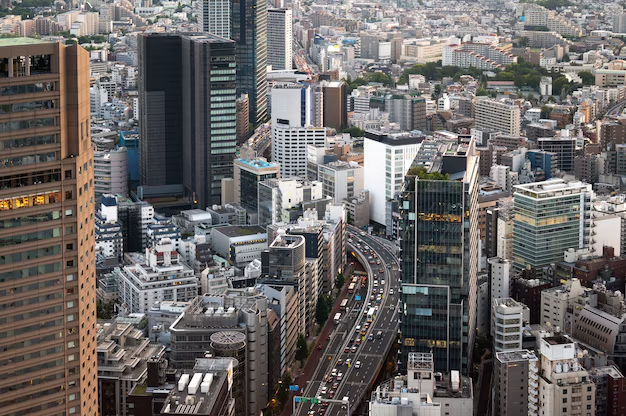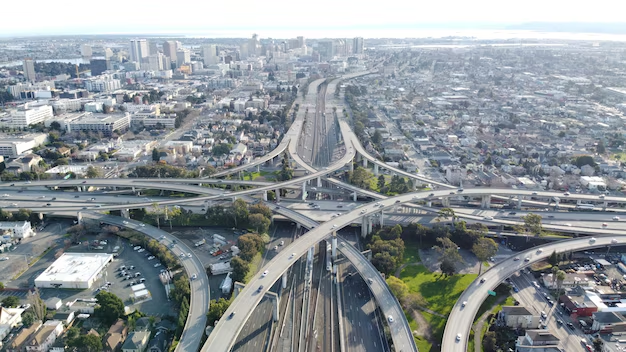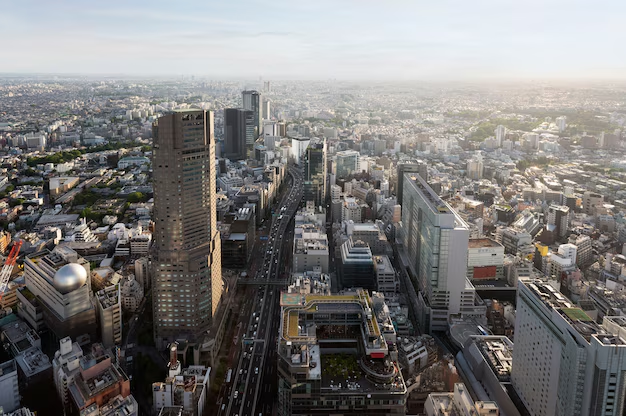Mexico is in the midst of a transformative journey with its ambitious plan-de-inversion-de-infraestructura-en-mexico, aimed at modernizing key sectors that are vital for economic growth and social development. This initiative is designed to address the country’s infrastructure gaps and promote long-term prosperity. But what does this mean for Mexico’s economy, investors, and citizens?
Mexico’s Current Infrastructure Landscape
Mexico, being the 15th largest economy in the world, has a mixed infrastructure landscape. While major cities like Mexico City and Monterrey boast modern transport and telecommunications systems, many rural areas are still underdeveloped. Transportation, energy, and telecommunications are the three main sectors where significant upgrades are needed to ensure inclusive growth and competitiveness on the global stage.
Government’s Role in Infrastructure Investments
The Mexican government plays a crucial role in setting national development priorities. Mexico’s plan-de-inversion-de-infraestructura-en-mexico includes a strong focus on infrastructure projects to improve logistics, energy, and public services. Public funding is crucial, but government initiatives also set the stage for encouraging public-private partnerships (PPP) that bring in much-needed capital and expertise from private investors.
Private Sector Involvement
A significant portion of Mexico’s infrastructure investment is being driven by private sector involvement. Public-private partnerships have been an essential mechanism, allowing businesses to partner with the government in financing and managing large-scale infrastructure projects. From energy plants to digital infrastructure, private firms see Mexico as a fertile ground for long-term investments.

The State of Infrastructure in Mexico
Historically, Mexico has faced challenges related to its infrastructure. Many regions lack adequate roads, public transport, and utilities, leading to inefficiencies and disparities in development. Recognizing this, the Mexican government has prioritized infrastructure as a key area for investment.
Current Infrastructure Projects
Some ongoing projects include:
- Mayan Train: A major rail project aimed at boosting tourism and connecting the Yucatán Peninsula.
- Mexico City Airport: Although controversial, this project intends to enhance air travel capacity in the capital.
- Highway Upgrades: Numerous road improvements to enhance connectivity between rural and urban areas.
Key Areas of Investment in Mexico
Transportation Infrastructure
Mexico’s roads, airports, and railways are central to its economic productivity. New highways are being constructed to reduce congestion, while expansions in rail connectivity are expected to boost trade with the U.S. and Canada under the USMCA agreement.
Energy Infrastructure
Mexico is pushing for increased capacity in renewable energy, including solar and wind farms. Efforts to modernize its electric grid will improve energy reliability and reduce dependence on fossil fuels.
Telecommunications and Digital Infrastructure
The rise of 5G networks and improved internet access is part of Mexico’s push to become a regional leader in digital transformation. Investment in digital infrastructure ensures businesses and citizens have access to fast and reliable internet services.
Water and Waste Management Systems
Water scarcity is a growing concern in certain regions, prompting investments in water purification systems, desalination plants, and modern waste management solutions that prioritize sustainability.
Economic Growth
A robust infrastructure plan is essential for economic growth. It creates jobs, stimulates local economies, and attracts foreign investment. The Mexican government aims to leverage infrastructure as a catalyst for economic recovery post-pandemic.

Read Also: pink-ardmore-nail-polish
Social Inclusion
Investments in infrastructure can bridge the gap between urban and rural communities, ensuring equitable access to essential services. Improved transportation can enhance access to education and healthcare, contributing to social development.
Regional Focus of Investment
There is a regional imbalance in Mexico’s infrastructure. Urban areas, particularly in the north, are seeing rapid development, while southern regions, often poorer, are in desperate need of attention. The Mayan Train Project in the Yucatan Peninsula is a key initiative aimed at addressing this imbalance, boosting tourism and regional growth in the south.
Impact on Employment and Economic Growth
Mexico’s infrastructure investment plan is expected to create thousands of new jobs. From construction to technology services, the projects will offer opportunities across various sectors. Furthermore, better infrastructure increases productivity and attracts more foreign direct investment (FDI), contributing to long-term economic growth.
Challenges Facing Mexico’s Infrastructure Development
Despite the ambitious plans, challenges remain. Budget constraints and political instability can hinder progress. Moreover, addressing environmental concerns and ensuring the projects meet social inclusion criteria are key to gaining public support.
Success Stories in Infrastructure Development
Mexico has already seen some success stories in infrastructure development. The Mexico City International Airport and the La Yesca Hydroelectric Plant are two prime examples of large-scale projects that have been completed successfully, benefiting both the economy and the local population.
International Investment in Mexico’s Infrastructure
Mexico has become a hotspot for foreign direct investment (FDI) in infrastructure, with countries like the U.S., Canada, and China playing major roles. International organizations, such as the World Bank and the Inter-American Development Bank, are also involved in financing projects that align with global development goals.
Sustainability and Green Infrastructure
A key element of Mexico’s investment strategy is sustainability. This includes the expansion of renewable energy sources and the development of smart cities.
Technological Advancements in Infrastructure
Mexico is also tapping into technological advancements to improve the efficiency of its infrastructure projects. From smart grids to automated toll roads, technology is helping reduce costs, increase efficiency, and ensure better project management.
Funding the Plans
Public vs. Private Investment
The Mexican government has acknowledged the need for both public and private investments. Public funding can help initiate projects, while private investment often brings efficiency and innovation.
International Partnerships
Mexico is also looking to engage with international partners to fund and support infrastructure projects. Collaborations with organizations like the World Bank can provide necessary resources and expertise.
Potential Challenges
Bureaucracy and Red Tape
Navigating through bureaucracy can slow down project implementation. Streamlining processes is crucial for timely execution.

Environmental Concerns
Infrastructure projects often face scrutiny regarding their environmental impact. Balancing development with sustainability is essential to ensure long-term benefits.
Security Issues
In some regions, security concerns can impede infrastructure development. Ensuring safety for workers and communities is paramount.
The Future of Infrastructure in Mexico
Embracing Technology
The integration of technology in infrastructure development, such as smart city initiatives and renewable energy solutions, can revolutionize the way projects are executed and maintained.
Community Involvement
Engaging local communities in the planning and execution of projects ensures that infrastructure meets their needs and fosters a sense of ownership.
Conclusion
Plan-de-inversion-de-infraestructura-en-mexico is a monumental step toward modernization and economic growth. With significant opportunities for both public and private sector players, the future looks promising. However, navigating the financial, political, and environmental challenges will be key to its long-term success.
FAQs
What is Mexico’s plan for infrastructure investment?
Mexico’s plan involves large-scale investment in transport, energy, telecommunications, and water management sectors to boost economic growth and employment.
How does the government fund these projects?
The government uses a combination of public funds, public-private partnerships, and foreign investment to finance infrastructure projects.
What role does the private sector play in Mexico’s infrastructure development?
The private sector plays a crucial role through public-private partnerships and direct investments in various infrastructure projects.


